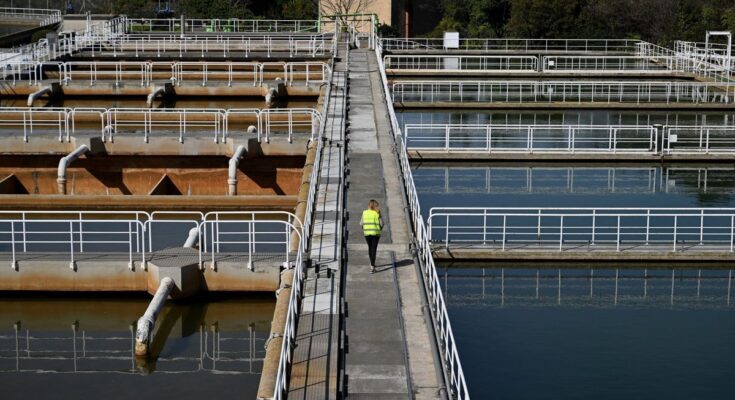Drawing its water from the Alps, Marseille does not have to fear a medium-term shortage of its resource, but is nevertheless trying to reduce its consumption, aware of climate change.
Even if, this year, the situation of French water tables is “generally satisfactory”, underlined this week the Bureau of Geological and Mining Research (BRGM), many communities examine them carefully each time the winter ends.
Marseille is lucky enough to capture its water from the tumultuous Durance River. It is then transported through the Marseille canal, a work completed in 1849.
“In our naturally arid Mediterranean region, Lake Serre-Ponçon in the Alps was designed in the 1950s to secure water resources.“while the Durance”naturally brought a lot of water but very punctually“, rather in spring and autumn, explains to AFP Philippe Picon, water resources director of the Joint Development Union of the Durance Valley (SMAVD).
The objective was to “take advantage of the quantity of water brought by the melting snow, store it in order to then be able to distribute it via an entire network of hydraulic infrastructures for all downstream uses: drinking water, agriculture, economic activities“, he continues.
In these areas of the Alps, “there is no intensive agriculture or heavy industries“so even raw, the water”does not contain pesticides, no nitrates, no drug residues“, boasts Emmanuel Guiol, deputy director of operations at the Marseille Water Company (SEM).
“It takes 24 hours to arrive“so far,” he explains, showing an immense open-air reservoir, which contains a stock of raw water of 450,000 m3, the equivalent of 225 Olympic swimming pools.
Ozone
The Sainte-Marthe treatment plant, the largest in the city, built in 1934 in its northern districts, alone covers 55% of Marseille's drinking water needs, supplying some 500,000 people.
The water is made drinkable via a clarification phase with a chemical product and sand filtration, then disinfection with ozone in order to eliminate possible viruses and bacteria.
“In the world, 99% of water is disinfected with chlorine, easy to use and very effective but which generally generates a flavor that is not always very pleasant.“, notes Mr. Guiol.
“Ozone water disinfection” has the advantage of eliminating “all the potential flavors that water can naturally have, and above all does not generate any additional taste”, he adds.
If the quality is not questionable with regard to its conformity with the standards of the Regional Health Agency at the time it leaves the water treatment plants, “it is not always good when it arrives at the tap because in a certain number of degraded condominiums such as Air-Bel, it is polluted“, however, recalls Bernard Mounier, president of “Water common good Paca”, citizen coordination for public water management.
Resource scarcity
In terms of quantity, the city does not fear a shortage in the medium term.
More, “in the coming decades, the quantity of water available in the Durance basin will decrease: we are talking about a 10% drop in this resource by 2050 and 25% to 30% by 2100“, notes Mr. Picon.
The SEM, which says it only captures a total of 5% of the water from the Durance, claims to act accordingly: “Over the last 25 years, we have reduced levies by 30%.“in the river and this”to always satisfy the same needs“with a generally stable Marseille population (around 900,000 inhabitants), underlines Mr. Guiol.
To avoid leaks, within 3,000 km of the network, “we renew a little more than 1% of these pipes every year“, he adds.
“Costly asset management, several tens of percent of the price of water“(which amounts to a little more than four euros per m3 in Marseille compared to 4.50 to 4.80 euros on average in Europe) but which guarantees the city a very good return on the distribution network, according to him.
The Aix-Marseille-Provence metropolis, particularly dependent on the Durance-Verdon system for drinking water (67% of its direct supply), is for its part studying the possibility of also using as yet unexploited groundwater.




